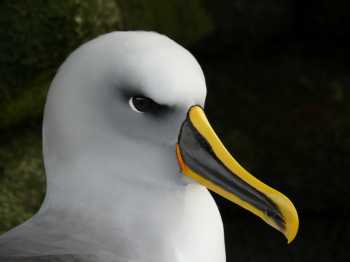Paul Sagar (National Institute of Water & Atmospheric Research Ltd, Christchurch, New Zealand) has tabled a final report at last month’s meeting of the Conservation Services Programme (CSP) of New Zealand’s Department of Conservation on the demography of Buller’s Albatrosses Thalassarche bulleri on The Snares.
The report's Executive Summary follows:
“This report presents a summary of the results of the collection of demographic data at three study colonies of Southern Buller’s Albatross Thalassarche bulleri bulleri breeding at The Snares from 23-29 March 2015. Demographic studies at the three study colonies have been undertaken annually since 1992, and so this report incorporates some of these data in the current analysis. Estimates of the numbers of breeding pairs, made by recording the contents of each nest mound, showed slight decreases in all three colonies over the numbers recorded during 2014. With the assumption that the combined total number of breeding pairs in the three study colonies was representative of North East Island as a whole then the breeding population probably peaked in 2005-2006 and has since undergone marked annual variations. A total of 295 birds that had been banded previously in the study colonies as breeding adults of unknown age were recaptured. A further 26 breeding birds were banded in the study colonies - these are presumed to be first-time breeders. During the period 1992-2004 all chicks that survived to near fledging in the study colonies were banded and their survival to return to the study colonies in subsequent years has been monitored. This year 134 of these birds were recaptured, with birds from cohorts banded from 1999 to 2004 being recaptured for the first time, and so showing the long-term monitoring required to obtain reliable estimates of survival of such known-age birds. A further 36 known-age birds, from cohorts banded 1996-2004, were found breeding for the first time, and so were recorded as being recruited to the breeding population.”

Buller's Albatross at The Snares, photograph by Paul Sagar
Click here to read earlier news items on Buller’s Albatrosses at The Snares.
Reference:
Sagar, P. 2015. Population Study of Southern Buller's Albatrosses on The Snares. Population Study of Buller's Albatrosses. Prepared for Department of Conservation May 2015. Christchurch: National Institute of Water & Atmospheric Research Ltd. 11 pp.
John Cooper, ACAP Information Officer, 17 July 2015

 English
English  Français
Français  Español
Español